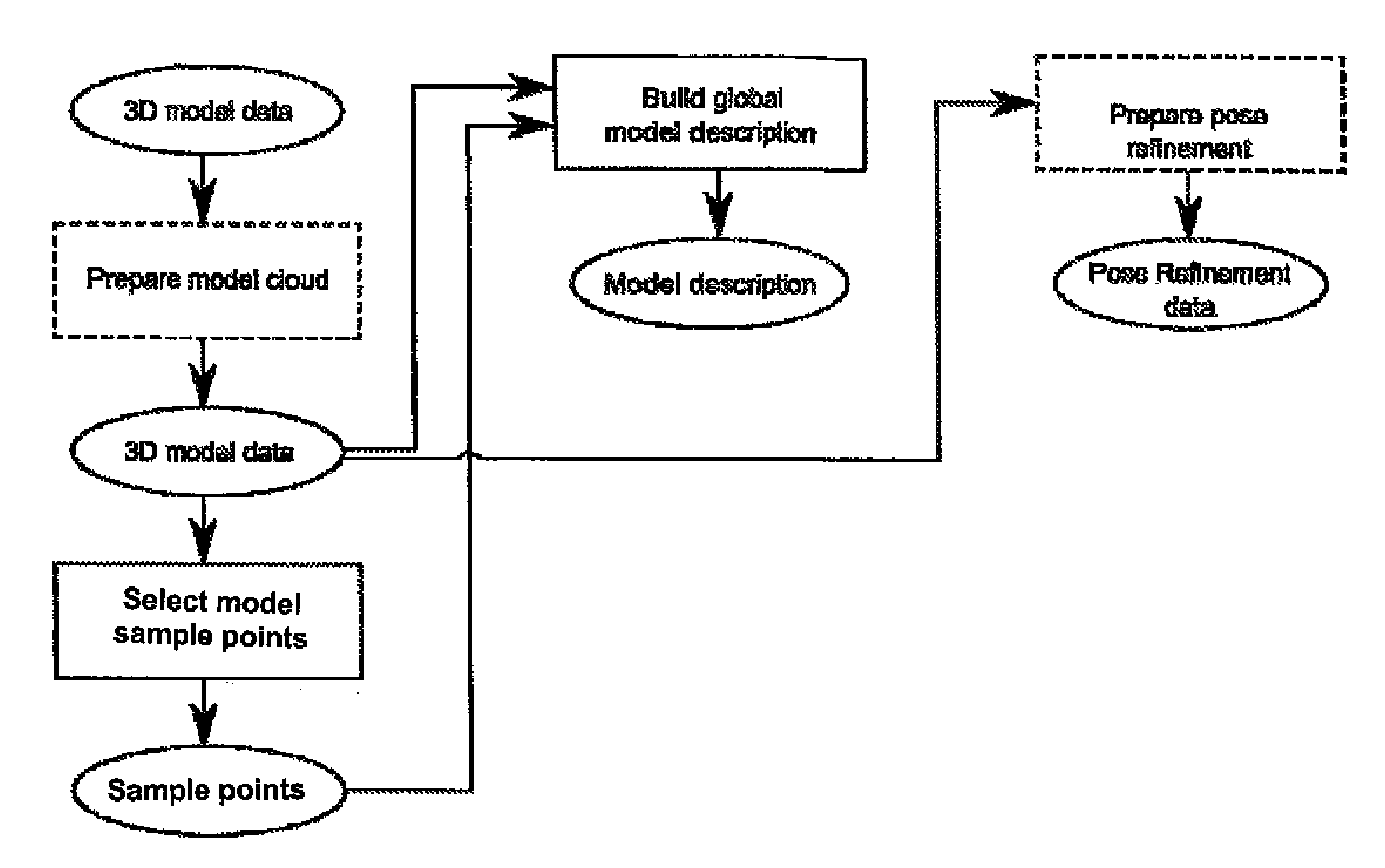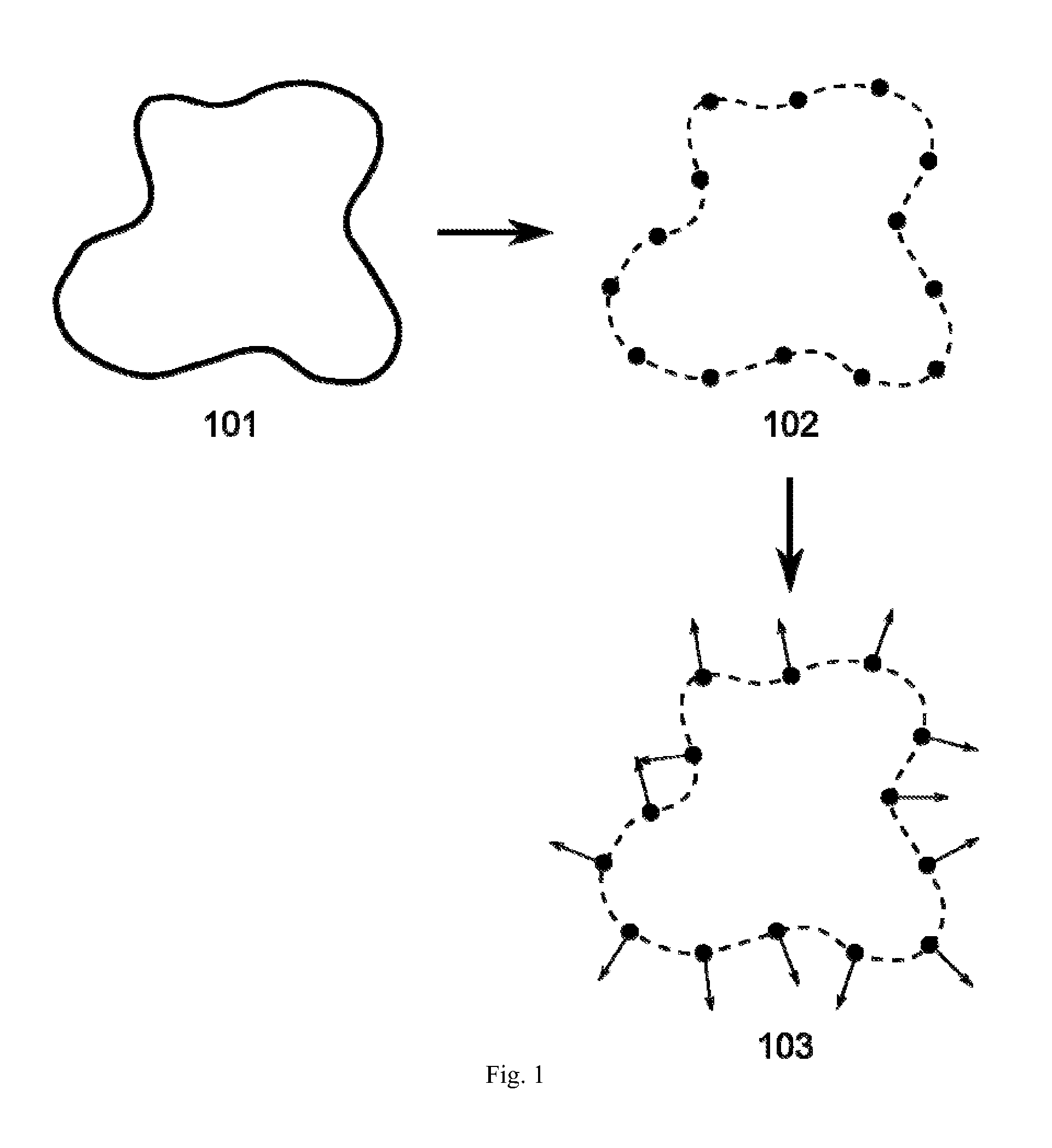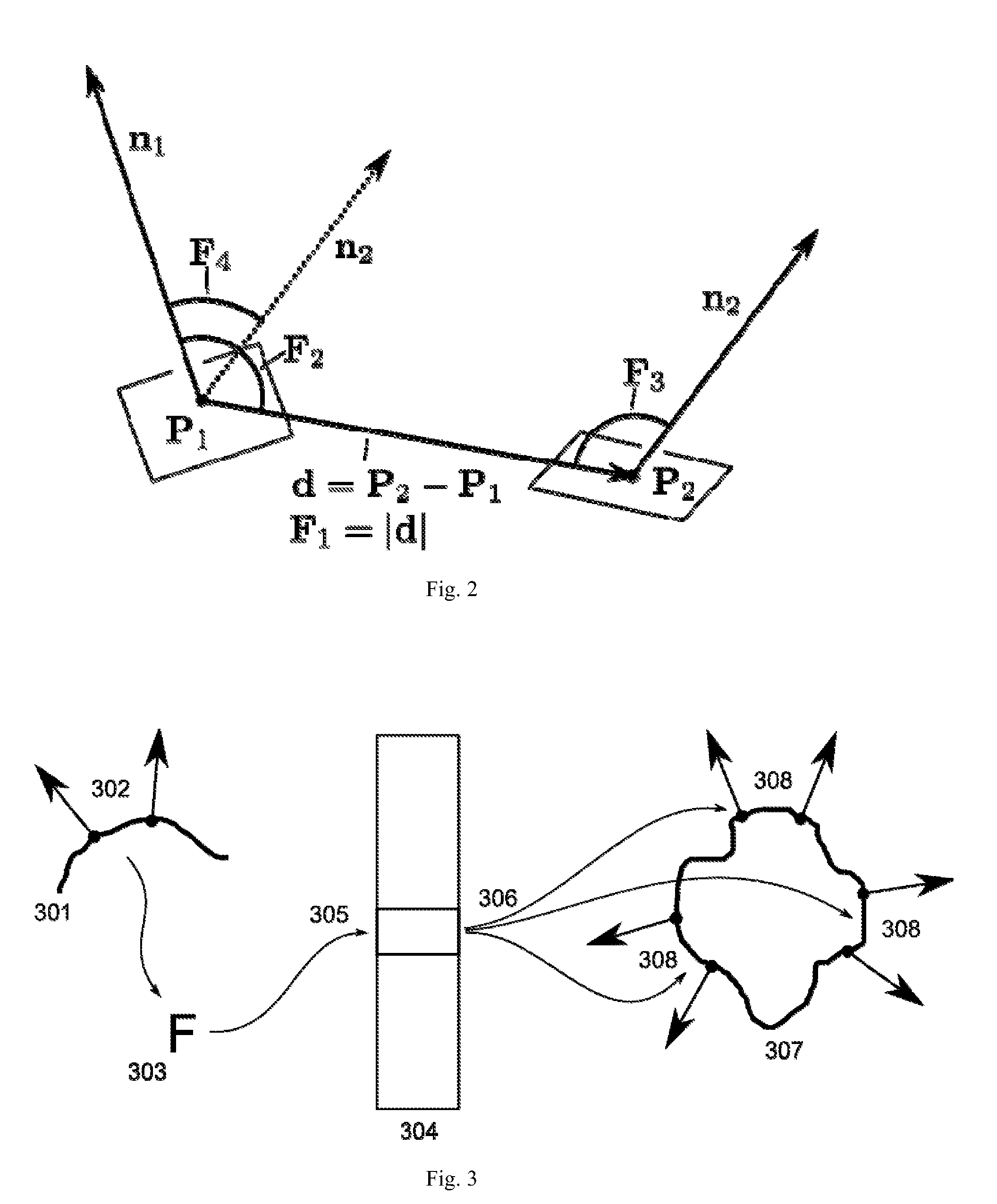Recognition and pose determination of 3D objects in 3D scenes
a 3d object and pose technology, applied in the field of machine vision systems, can solve the problems of inability to recognize and localize 3d objects in 3d scenes, inability to implement local descriptors in real-time systems, and inability to accurately match scene and object correspondences, etc., to achieve low computation time, low cost, and robust to noise
- Summary
- Abstract
- Description
- Claims
- Application Information
AI Technical Summary
Benefits of technology
Problems solved by technology
Method used
Image
Examples
Embodiment Construction
Denotations and Definitions
All of the following data is supposed to be available in electronic form, preferably digital. The methods and algorithms described are considered to be in electronic form and computer implemented.
In the following notation, a 3D point is a point in 3D space that has three coordinate values. Each 3D point refers to a coordinate system, with the most notably coordinate systems being the scene coordinate system where the 3D scene data is defined, and the object coordinate system where the 3D object of interest is defined. A 3D vector is a vector in 3D space that has three coordinate values. A 3D normal vector at a point on a surface is a vector in 3D that has an Euclidian length of 1 and that is perpendicular to the surface at the given point. A 3D point cloud is a set of 3D points. An oriented 3D point cloud is a 3D point cloud where a 3D normal vector is associated with each point. A 3D rigid transformation is a mapping of 3D points to 3D points that preserv...
PUM
 Login to View More
Login to View More Abstract
Description
Claims
Application Information
 Login to View More
Login to View More - R&D
- Intellectual Property
- Life Sciences
- Materials
- Tech Scout
- Unparalleled Data Quality
- Higher Quality Content
- 60% Fewer Hallucinations
Browse by: Latest US Patents, China's latest patents, Technical Efficacy Thesaurus, Application Domain, Technology Topic, Popular Technical Reports.
© 2025 PatSnap. All rights reserved.Legal|Privacy policy|Modern Slavery Act Transparency Statement|Sitemap|About US| Contact US: help@patsnap.com



